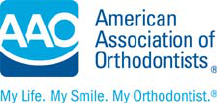
ORTHODONTIC
INFORMED CONSENT
During Bisphosphonate Treatment
_________________________________
for the Orthodontic Patient
Risks and Limitations of Orthodontic Treatment
The purpose of this document is to inform
you of the general risks associated with
orthodontic treatment of patients who are
now taking, or have taken in the past,
medications known as “bisphosphonates.”
Bisphosphonates are medications prescribed
by your physician for the treatment of a
variety of difficult medical disorders.
Bisphosphonate medication types that you
may be taking, or have taken, can be:
Fosamax (alendronate), Actonel (risedronate),
Boniva (ibandronate), Skelid (tiludronate),
Didronel (etidronate), Aredia (pamidronate),
or Zometa (zoledronic acid). There may be
some additional brand names in addition to
the above, but they are all known as
“bisphosphonates.” Every medication has
risks and benefits.
All bisphosphonates inhibit osteoclastic
(related to bone) activity. They have the ability
to, and probably will, inhibit tooth movement
during orthodontics. This issue may slow your
response to orthodontic movement and
lengthen orthodontic treatment time. The
effects of these medications may be severe
enough to stop tooth movement, which may
cause braces to be removed regardless of
favorable or unfavorable tooth position. No
orthodontist can predict the effect
bisphosphonates will have upon an
individual’s tooth movement.
Long-term bisphosphonate use has been
observed to decrease bone healing. It is
possible that tooth movement and any
surgery procedures performed within the jaws
or bone surrounding the teeth may be
difficult, and, in some cases, no bone healing
may occur.
The risk for developing osteonecrosis is
higher for cancer patients on i.v.
bisphosphonate therapy.
I have reviewed this notice, and I understand the issues it describes. I have discussed any questions
I have with my doctor. I acknowledge I assume these risks and choose to continue with treatment.
___________________________________ _________________
Signature of Patient/Parent/Guardian Date
©
American Association of Orthodontists 2013
